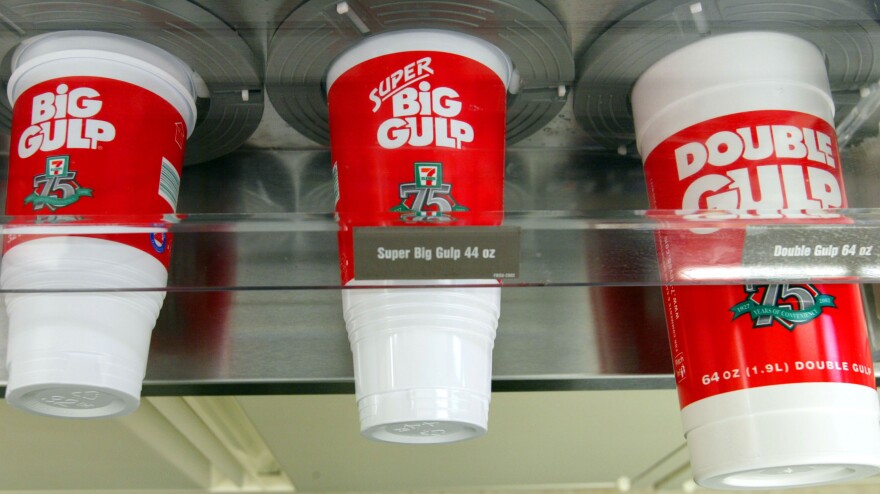When you go into a restaurant, you probably give some thought to whether you're ordering a small, regular or large sandwich.
That makes sense.With widening waistlines across the land, many of us want to make a health-conscious choice. But are we really getting a small portion when we order a small sandwich?
Well, that depends.
University of Michigan marketing professor Aradhna Krishna has studied how labels impact how much we eat. In one experiment, she gave people cookies that were labeled either medium or large, and then measured how much they ate.
The catch? The cookies were identical in size.
What happened? You guessed it. People ate more cookies when they were labeled "medium." Rather than trust what their stomachs were telling them, in other words, people went by the label.
(Listen to the radio piece above for how the same phenomenon affects people who go clothes shopping and seek out smaller sizes.)
"Just because there's a different size label attached to the same actual quantity of food, people eat more. But also, [they] think they've not eaten as much," says Krishna.
Krishna said the psychological principle at work has big ramifications because a 32-ounce soda at McDonald's is called a large soda, but the same drink at Wendy's is called a medium. A small coffee is 10 ounces at Dunkin' Donuts and 12 ounces at Caribou Coffee. When you trust labels, you could end up eating and drinking a lot more than you thought. Check out some visuals over at fastfoodmarketing.org.
Most Americans, moreover, don't realize the "large" soda they order today is about six times as large as the same soda 60 years ago, according to the Centers for Disease Control and Prevention.
"Across the U.S., again what has happened is that food sizes have become larger over time," says Krishna. "So, that same hamburger has become bigger, the french fries have become bigger, and again this is leading to obesity."
Restaurants today can label food and drink as they please. But given the power of labels in shaping behavior, Krishna said that standardizing portion sizes across restaurants could have a bigger impact on public health than New York City's controversial recent ban on all sodas larger than 16 ounces at restaurants and other eateries.
"We're not talking about restrictions in terms of freedom in any way," she said. "All I'm saying is that sizes should be made more uniform, and that will only help the consumer because you'll know what you're getting."
Sticking labels on menus isn't the only way to influence what people eat. As we've reported before, eating off a smaller plate can cause people to overestimate the serving size they've received — and eat less. Drinking beer from a straight glass, rather than a curved one, makes people drink more slowly and better gauge how much they've had to drink.
Krishna said the phenomenon of labels' influencing consumer behavior isn't unique to food. So-called vanity sizing is rampant in the clothing industry. Marketers are relabeling large-size clothes as small to give customers the satisfaction of feeling that they still fit into small-size clothing.
"What used to be a size 8 in the 1950s has become a size 4 in the 1970s and a zero in 2006," Krishna said.
In another study, Krishna and her colleagues found that vanity sizing improved people's body image. Labels shape our experiences in both positive and negative ways.
Referring to different bust sizes among women in Asian countries and in the United States, Krishna argued that people often don't have control over their body size and shouldn't need to feel blame or shame for not conforming to society's ideals. "It's not a question of being lied to," she said. "It's a question of do you want to be lied to."
Copyright 2022 NPR. To see more, visit https://www.npr.org.






